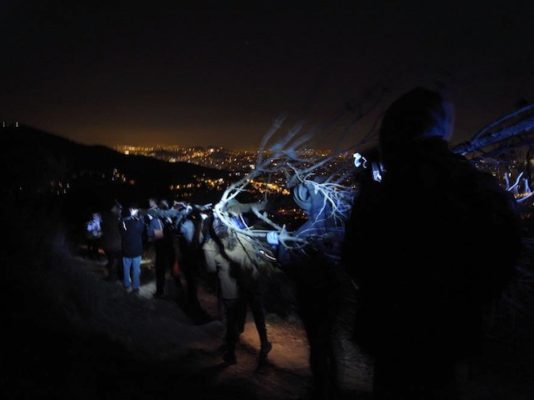Search
To search for an exact match, type the word or phrase you want in quotation marks.
A*DESK has been offering since 2002 contents about criticism and contemporary art. A*DESK has become consolidated thanks to all those who have believed in the project, all those who have followed us, debating, participating and collaborating. Many people have collaborated with A*DESK, and continue to do so. Their efforts, knowledge and belief in the project are what make it grow internationally. At A*DESK we have also generated work for over one hundred professionals in culture, from small collaborations with reviews and classes, to more prolonged and intense collaborations.
At A*DESK we believe in the need for free and universal access to culture and knowledge. We want to carry on being independent, remaining open to more ideas and opinions. If you believe in A*DESK, we need your backing to be able to continue. You can now participate in the project by supporting it. You can choose how much you want to contribute to the project.
You can decide how much you want to bring to the project.

They were supposed to meet up last Friday to go and find a tree, but the bad weather and premonition of it being treacherous underfoot made them postpone it until Saturday; and then, yes: they gathered at nine o’clock at night to distribute the tasks and begin to ascend, up the mountain, towards where the tree lay.
A tree, thirteen metres of pine and branches with pinecones, awaited them on the ground, beside the path. Well shod and armed with torches and rubber gloves some twenty people picked up the tree and began the return journey, down the hill; via a narrow path, first of stones and mud, and then between cars and bicycles.
It’s said that this time they are all Black Tulip. It’s also said that from the houses at the foot of the funicular one could see a crowd of lights slowly descend amidst the trees, approaching little by little. And that’s how it was, as the dead trunk was heading straight for one of these houses.
Having overcome the most difficult and risky part, where the thirteen metres of the tree cut across the road, the pine finally entered through one of the windows of Halfhouse, traversing the room and entering directly into the fireplace. The tree trunk, twice as long as the room it had been introduced into, thrust its leafy crown out of the window, thereby impeding that this opening of the house could be closed and configuring a highly surreal but entirely real scenario. It was half past eleven at night and the fire in the fireplace began to eat away at the tree, a process that surprisingly lasted less than a week (07/03/2013, 04:39h : 0 metres) and one that would be accompanied by many comings and goings to the forest, in search of wood; of many visitors to Halfhouse, and a continuous vigil. They say that all those who have watched over the tree are also Black Tulip.
During the process, the protagonist at Halfhouse has been the room with the fireplace. There were chairs on both sides of the trunk that, with a strong sculptural presence, divided the room in half. This space became a meeting point, while the room normally dedicated to the exhibiting of artwork acquired the role of a bedroom, full of sleeping bags and the rucksacks of those who have accompanied the trunk until it’s final consummation.
The rhythm at which the wood burned marked the passing of time within Halfhouse that was counted not in minutes and hours but in metres, wood and ashes.
The action has consisted in a ritual of doing, that stemmed from the proposal of going to look for a dead tree, that had fallen in the woods, and between some twenty people to carry it on foot into an exhibition context, to enter it through the window until it reached the fireplace and to keep vigil over its incineration. And not just to propose it, which is the most important thing, but to do it. To do it and use the fireplace in an incorrect manner, to use the house for something that it wasn’t supposed to serve for and to show, once again, that art elaborates itself, configuring its own nomenclatures, and that it can self-legitimate for the simple fact of calling itself what it is.
During the whole process I haven’t been able to stop thinking about the steam boat that Werner Herzog had lugged over a hill during the filming of “Fitzcarraldo”, in 1982.

Anna Dot was born on a Sunday in April. She is from Torelló and works between two worlds, worlds that she cannot perceive as being in any way separate: one of artistic production and one of reflection, writing about contexts of art.
"A desk is a dangerous place from which to watch the world" (John Le Carré)